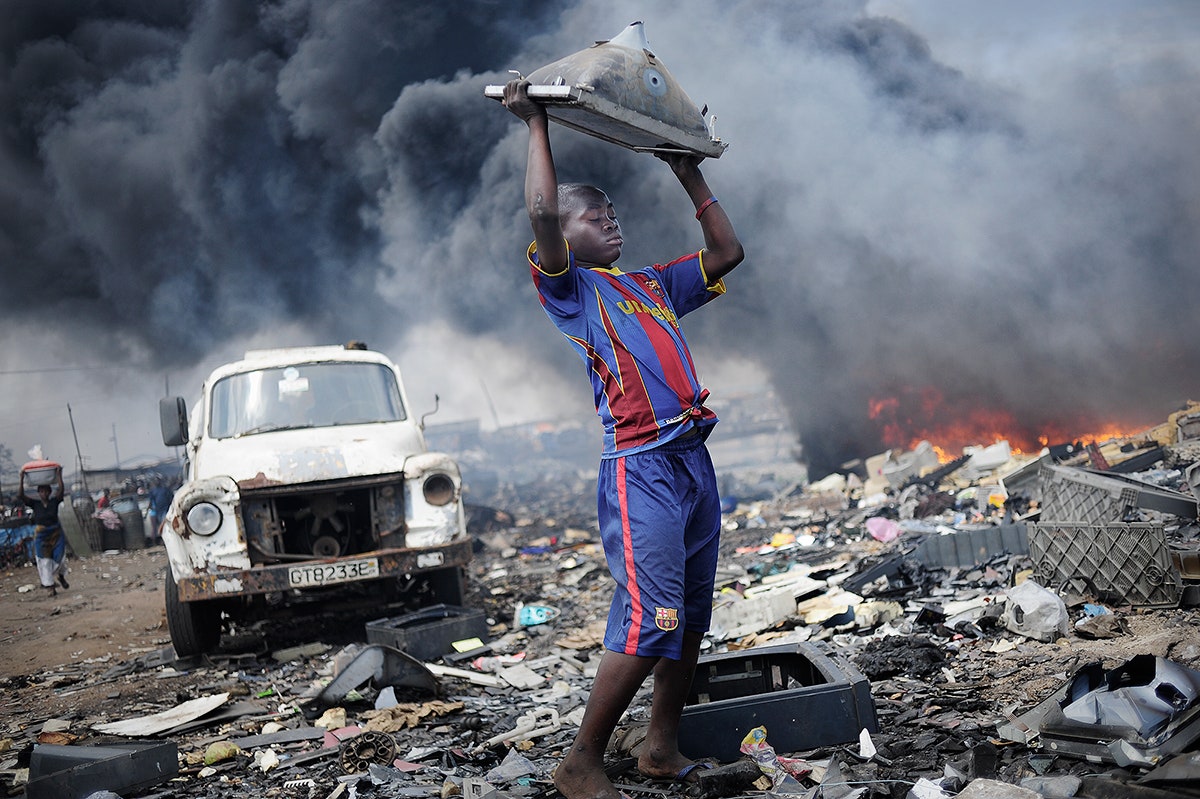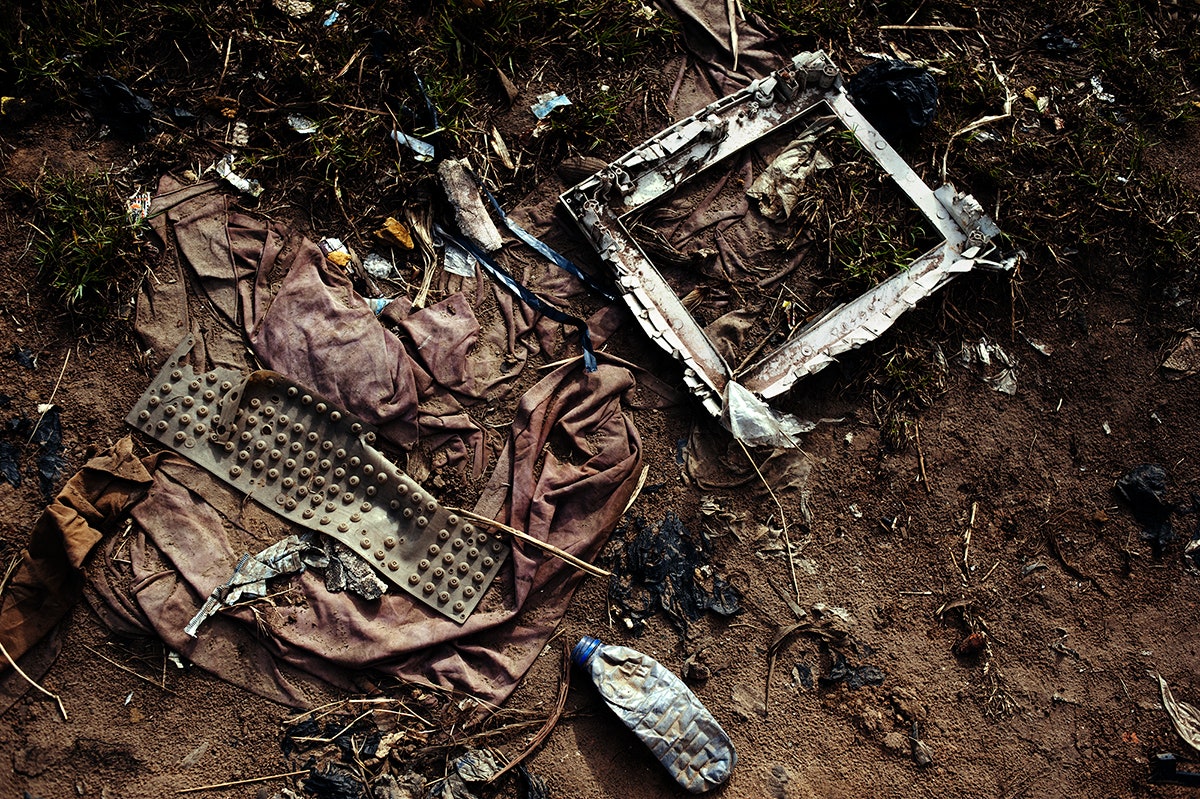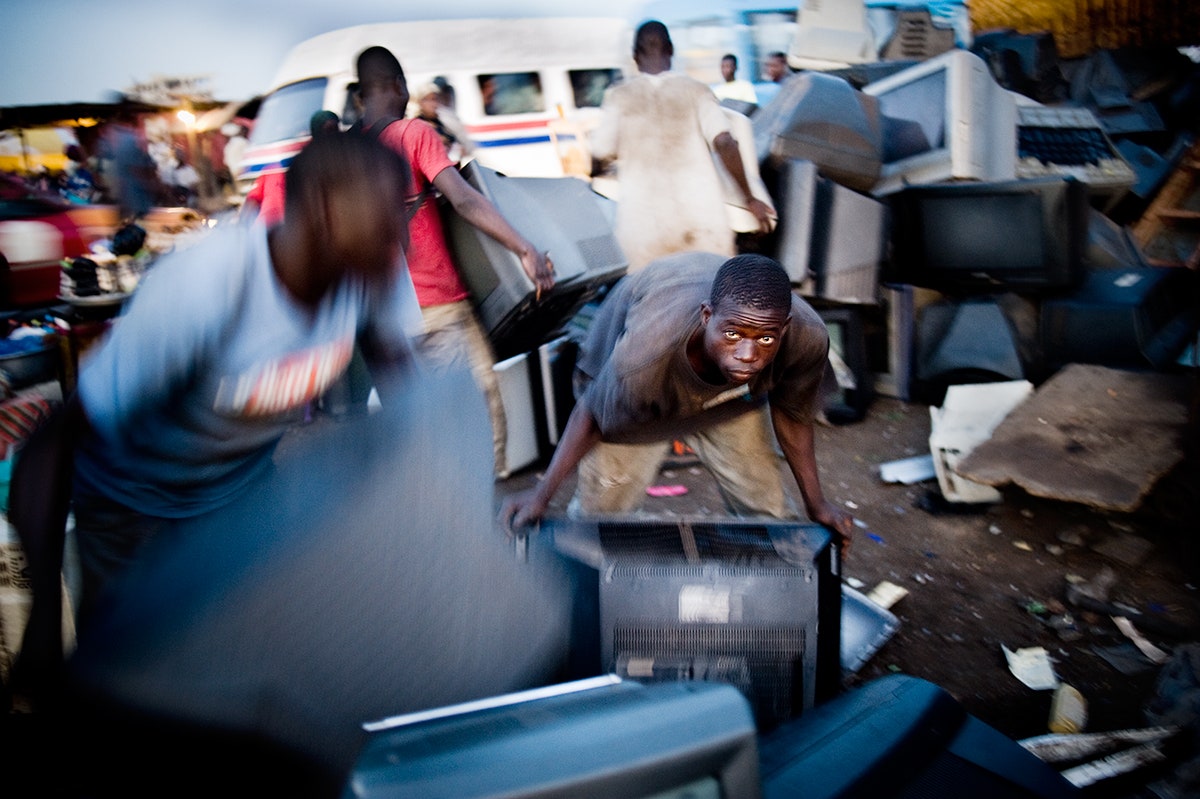If you buy something using links in our stories, we may earn a commission. This helps support our journalism. Learn more. Please also consider subscribing to WIRED
Each year the planet generates some 50 million tons of electronic waste, ranging from batteries to mobile phones to light-up children’s toys. And although such devices may have been discarded, they’re not without value—the United Nations recently estimated the total worth of all that e-waste at $55 billion, thanks largely to the trace amounts of gold, silver, and other metals they contain. The problem, though, is getting them out.
German photographer Kai Löffelbein spent seven years documenting how those metals are extracted, often under dangerous conditions, by some of the world’s poorest people. His forthcoming book, CTRL-X: A Topography of E-Waste, contains photographs he took in Ghana, China, and India, where much of the world’s e-waste ends up. (This despite the 1989 Basel Convention, an international treaty intended to reduce the transfer of e-waste from developed countries to developing ones.)
"As a photographer, you’re surrounded by so much stuff," Löffelbein says. "I own several computers, a laptop, many cameras. I started to ask myself where all that stuff would end up."
To answer that question, Löffelbein first traveled to Accra, the capital of Ghana and home to Agbogbloshie, the world’s largest e-dump, where about 700 people—including children as young as 12—make a living by scavenging for electronics. "It was described to me as the gates of hell," the photographer recalls. “And that’s what it was.” He found some of the youngest children tossing copper cables into fires to burn off their rubber coating, sending plumes of noxious black smoke into the already polluted air.
The photographer witnessed other workers using stones to break open electrical devices. One of his favorite photographs is of a boy in a Barcelona soccer jersey hoisting the skeleton of a television above his head like a trophy against a background of billowing black smoke.
Löffelbein next visited the Chinese city of Guiyu, home to a lucrative and efficient e-waste industry. Here, broken devices are disassembled in small workshops or janky warehouses. In one photograph, two women sit at work desks, an enormous pile of extracted circuit boards between them. China has tried to cut down on e-waste imports, but the total amount, including items discarded by its own citizens, doubled between 2010 and 2015. Because of the air, soil, and water pollution generated by all that e-waste, officials in Guiyu try to keep the city’s scavenging industry under wraps, an effort that lead to Löffelbein being detained by local police.
Of all the locations he visited, Löffelbein found the air pollution worst outside of New Delhi, where there’s an entire commercial district devoted to e-waste recovery, including the same kind of cable burning he saw in Accra. "That was the one time I thought it would be better to wear a gas mask, because I really felt my lungs were burning," he says.
Löffelbein hopes governments around the world will adopt stricter environmental laws and encourage proper recycling of electronics. But the recycling industry isn’t perfect. Every year, the Seattle-based Basel Action Network hides GPS trackers in electronic devices and gives them to recycling companies or charities that say they recycle; in 2017, about a third of the devices wound up in developing countries, primarily China.
The only real solution to the rising tide of e-waste may be for consumers to give up their mania for the new new thing. "There is the iPhone 8, then there will be the iPhone 9," Löffelbein says. "Even if our laptop has been working for six or seven years, we think it is old and we need a new one. It’s about thinking about our consumption, and how we can stop increasing it."
- These theme parks are abandoned, but not forgotten
- The ominous skyline of a Bond villain's real-life lair
- Where stars go to live and die


